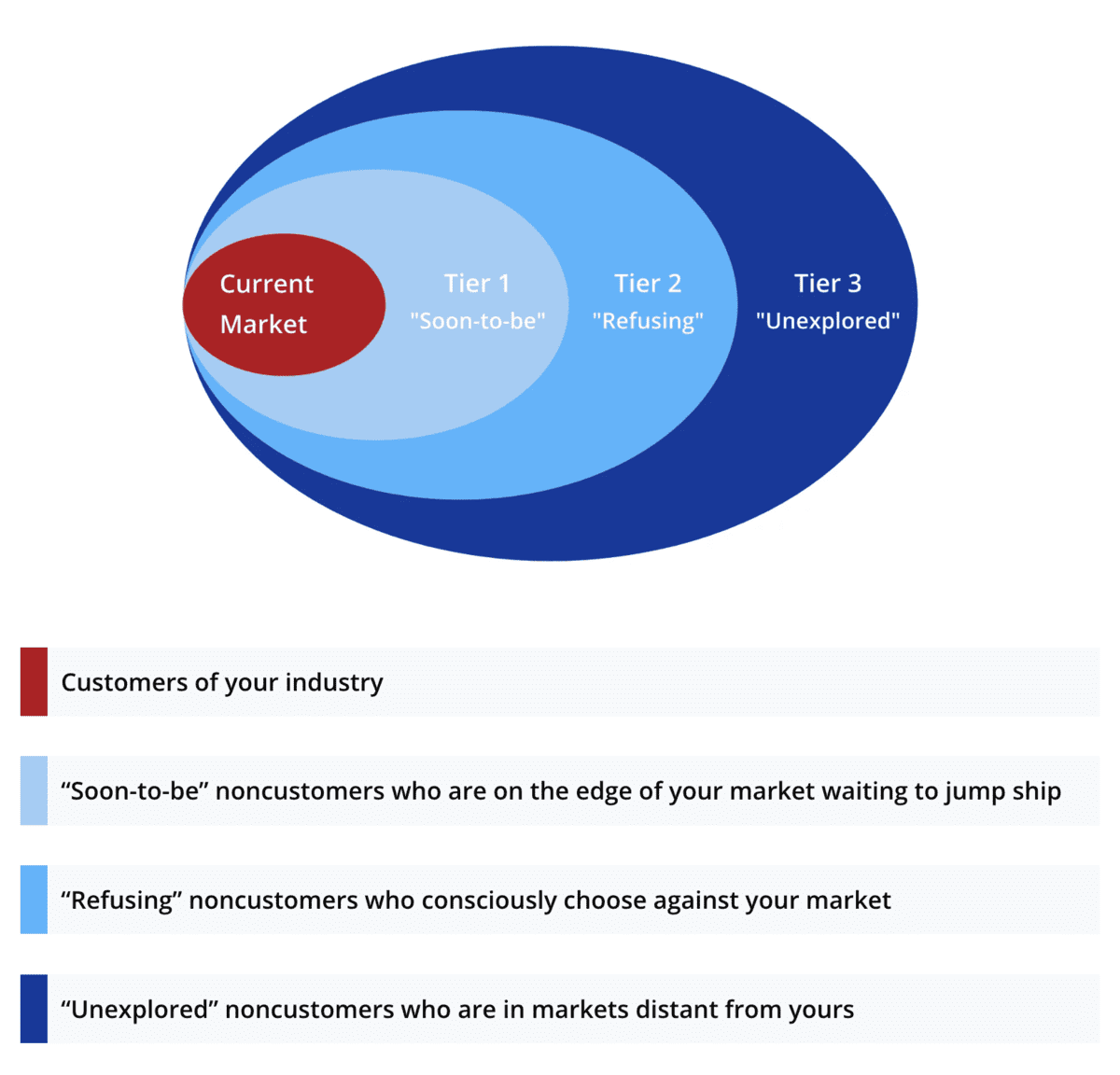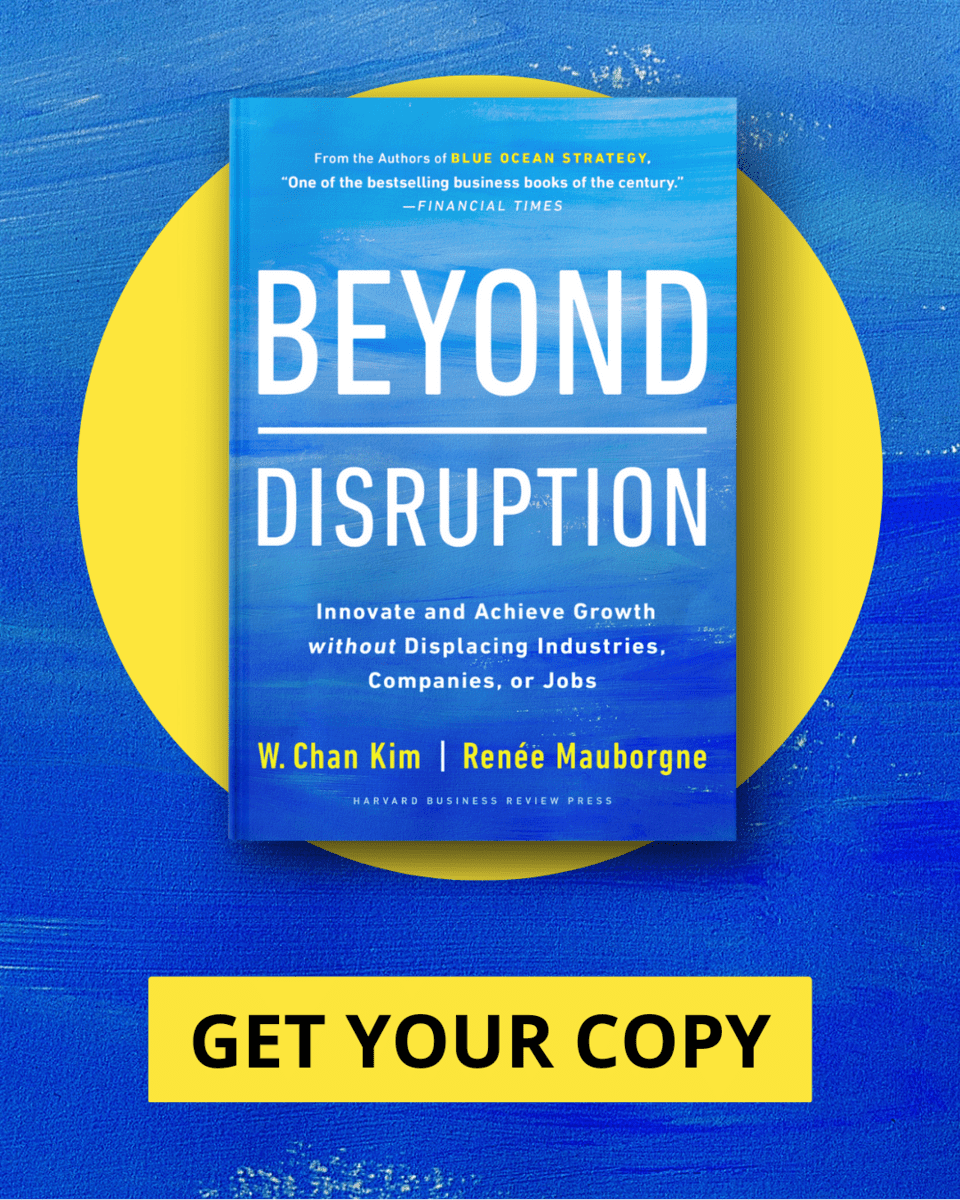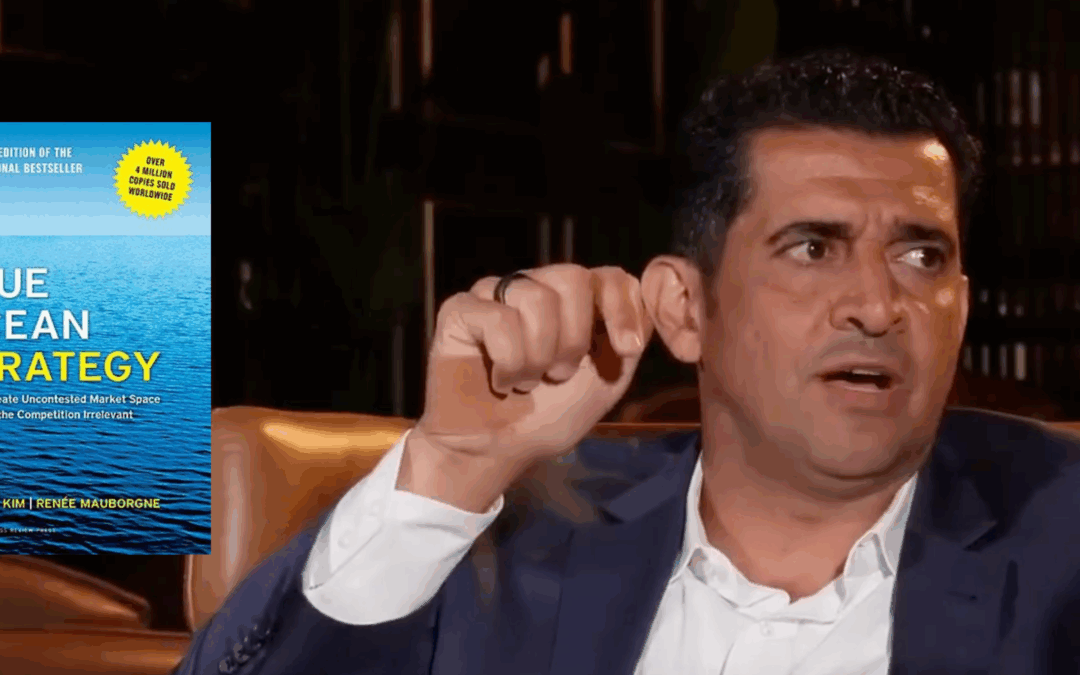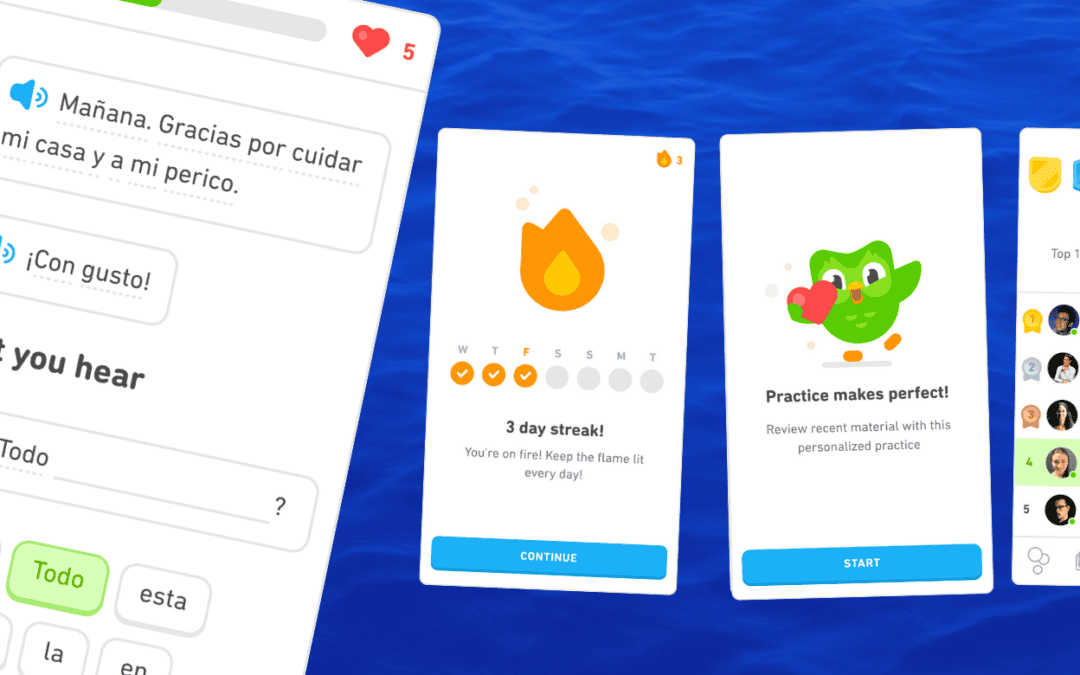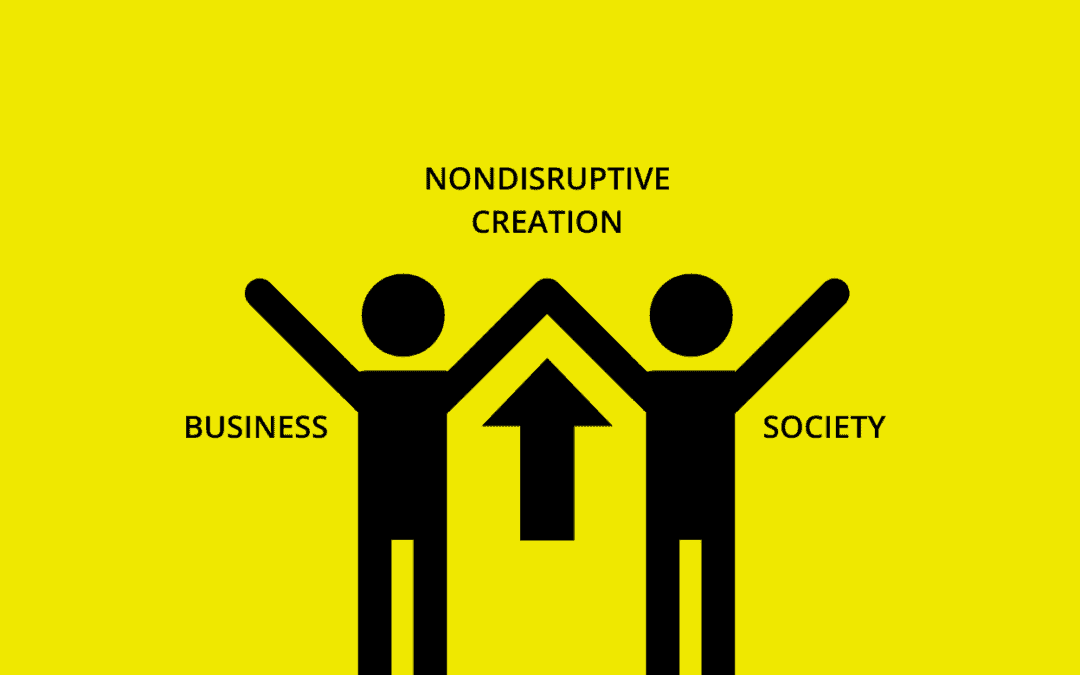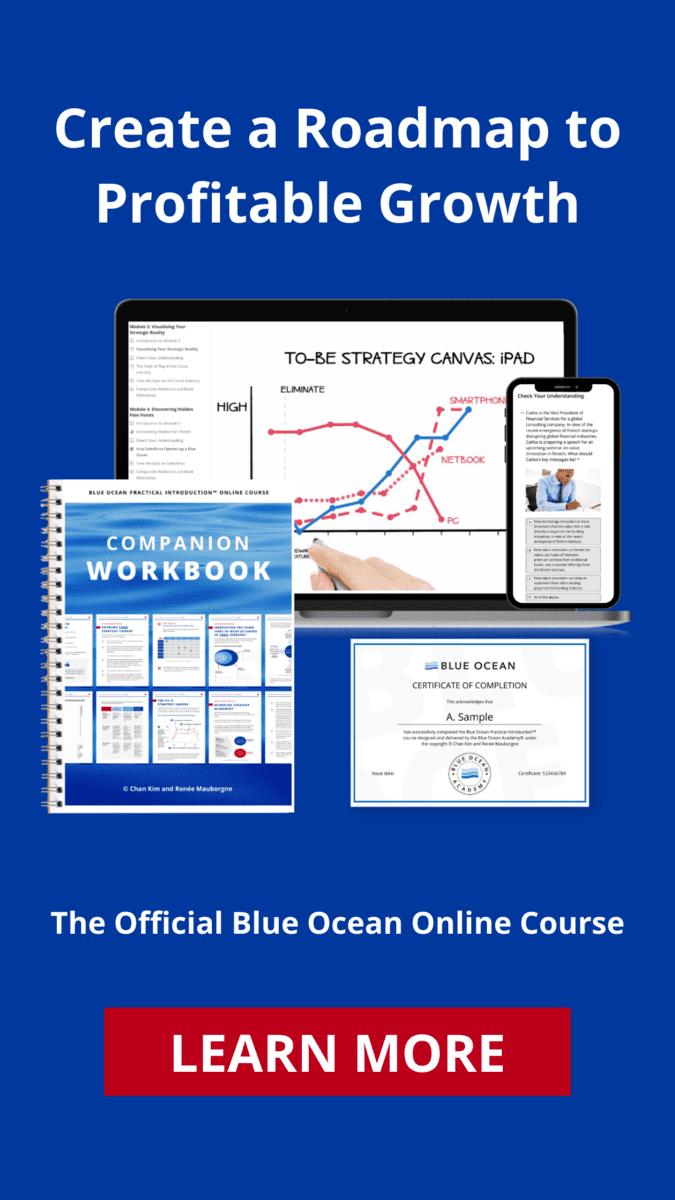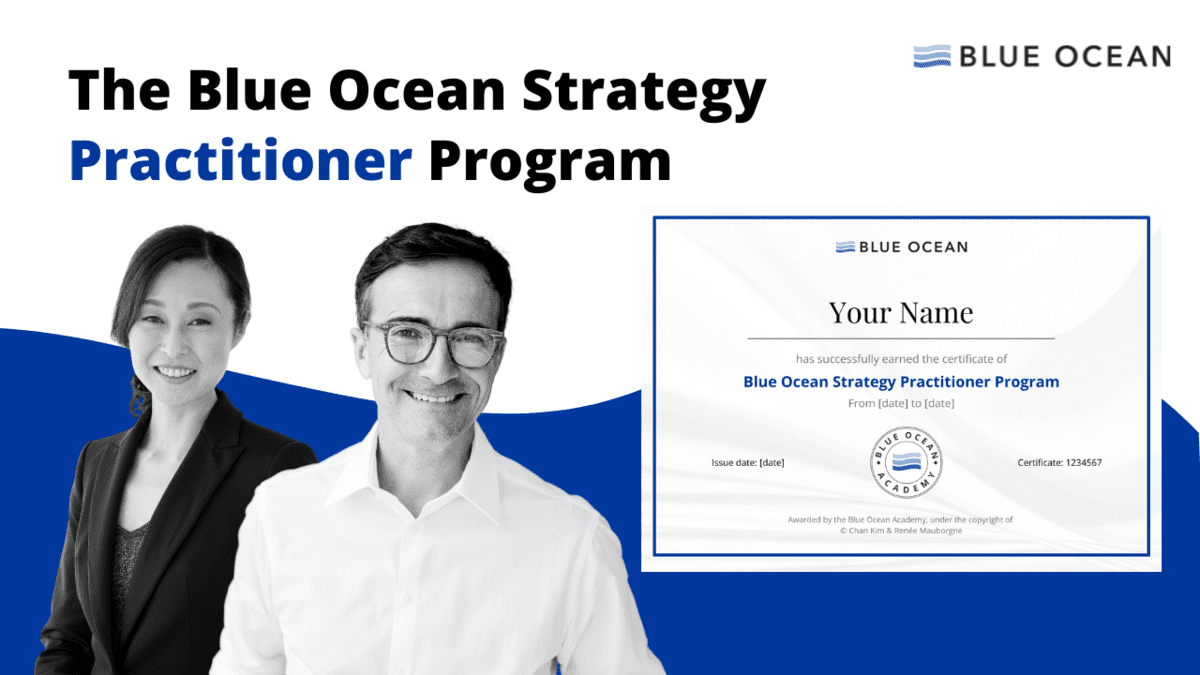Making a blue ocean shift is about creating new demand and growing your industry, rather than competing for existing customers. One of the first steps of the blue ocean shift process is to identify the demand that exists beyond your industry. These are your noncustomers: buyers that don’t buy into your industry, product or service yet.
The notion of noncustomers – anyone who is not a customer – is broad. So how can you identify your noncustomers? And how can you transform noncustomers into new customers? Chan Kim & Renée Mauborgne’s three tiers of noncustomers will help you achieve both.
The Three Tiers of Noncustomers
© Chan Kim & Renée Mauborgne, Blue Ocean Shift
First-Tier Noncustomers
The first-tier of noncustomers is the closest to your industry, they sit on the edge of the market. These buyers minimally purchase an industry’s offering but are ready to jump ship as soon as they discover a superior alternative.
Just think how many industries and services – from credit cards to health insurance – you buy into not because you want to but because you have to. And if you were given a better alternative, you would be among the first to go for it.
Do you know your industry’s first-tier noncustomers and the pain points that make them ready to jump ship? You should. You could multiply the rate and frequency of their use and create new demand if you did.
There are first-tier noncustomers waiting to be swayed in every industry.
Fast-food chain Pret A Manger did just that. Pret identified the first-tier noncustomers of the fast-food industry that bought into it because they didn’t have much of a choice. They craved healthier and fresher options but needed to have their lunch fast, and at a reasonable price.
By identifying and understanding the common needs of these first-tier noncustomers, Pret was able to offer them the compelling alternative they had been waiting for – restaurant-quality sandwiches made fresh every day using only the best ingredients, ready to grab on the go, at reasonable prices.
There are first-tier noncustomers waiting to be swayed in every industry. In the taxi industry, they were the regular cab users who immediately switched to the more convenient alternative that Uber created for them. Or the music lovers who swapped downloading with iTunes, for streaming any song at any time with Spotify.
Second-Tier Noncustomers
Second-tier noncustomers are refusing noncustomers. They have consciously thought about and considered your offering and then rejected it. It might be because another offering meets their needs better, or it could be that they simply can’t afford your offering.
A second-tier noncustomer will compare your offering with another offering, weighing the pros and cons of each. If cost is the main factor, they will choose the more reasonable option. But often cost is not the factor that causes buyers to refuse your industry. It can be as simple as buyers who stick to beer although they’ve considered wine because the choice offered by the wine industry is just too obscure and overwhelming.
A second-tier noncustomer will compare your offering with another offering, weighing the pros and cons of each.
The fact that second-tier noncustomers considered your industry means that you are far closer to possibly capturing them than you realize. So you need to find out why second-tier noncustomers refuse to use the products or services of your industry.
Look for the commonalities across their responses – this will lead you to the pain points preventing them from buying into your industry. Then, identify the pain points you can overturn to capture your second-tier noncustomers.
Third-Tier Noncustomers
The third tier of noncustomers is the furthest away from your industry. They are the noncustomers who have never even considered your offering as an option. In turn, these unexplored noncustomers have often not been considered by any player in your industry as a potential customer. That’s because their needs have always been assumed to belong to other industries.
Has your company given any thought to your third-tier of noncustomers at all? You should because the third tier represents the biggest pool of noncustomers you could be tapping into.
But don’t assume however that third-tier noncustomers are simply ‘everyone else’. They are noncustomers who could benefit from your service or product, but don’t, because they have never considered it as an option.
Microfinance captured third-tier noncustomers who previously didn’t have access to financial services at all. By offering microloans to disadvantaged entrepreneurs and small business owners with no access to banks or investors, microfinance opened up a whole new industry to lift people out of poverty.
But don’t assume however that third-tier noncustomers are simply ‘everyone else’.
Jumping from microfinance to the cosmetics industry, forward-thinking companies saw men as an increasingly powerful market. Identifying men as their third-tier noncustomers, they created a growing array of products aimed at men, using traditionally female cosmetics like mascara.
Once you have a better understanding of your three tiers of noncustomers, aim for the biggest pool of noncustomers your company can act on. Go beyond looking at each tier separately. Explore overlapping commonalities across tiers to capture noncustomers at all three levels.


